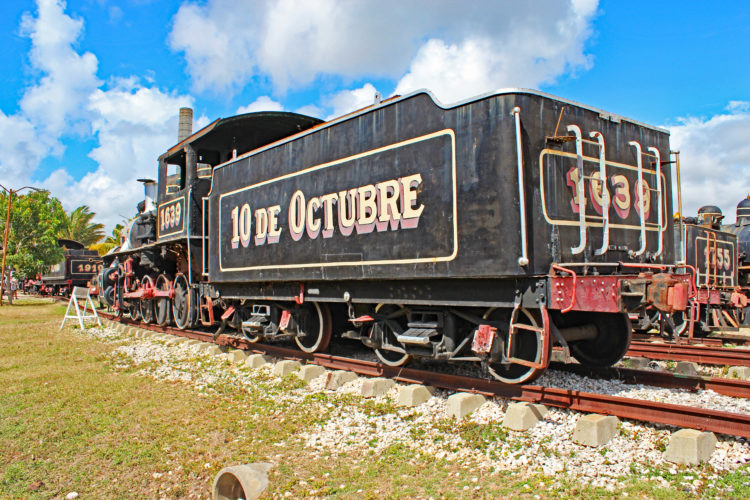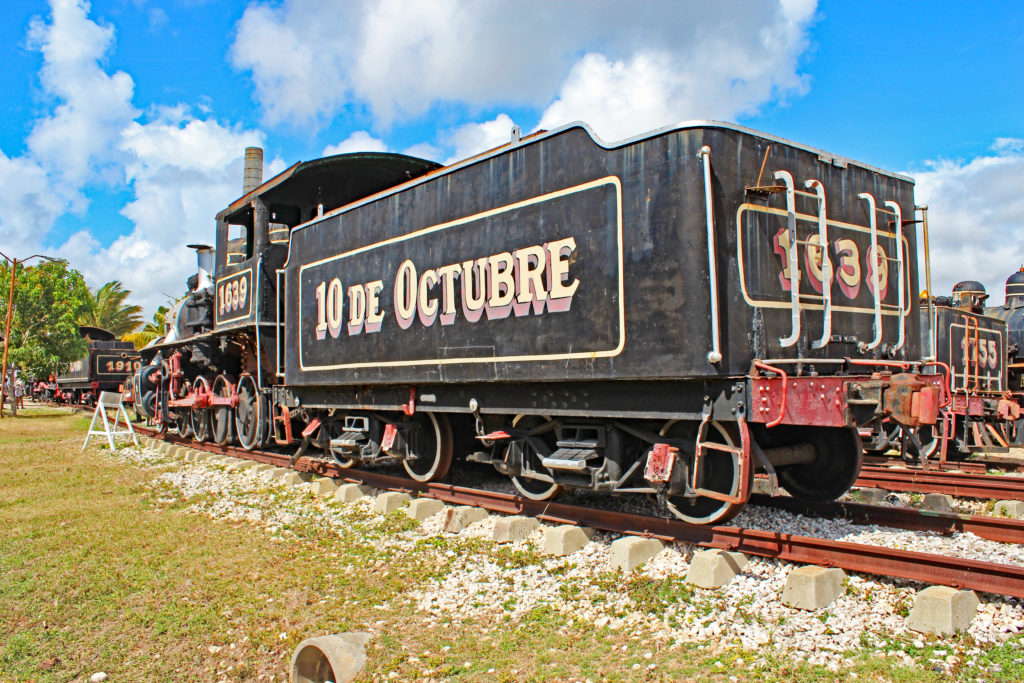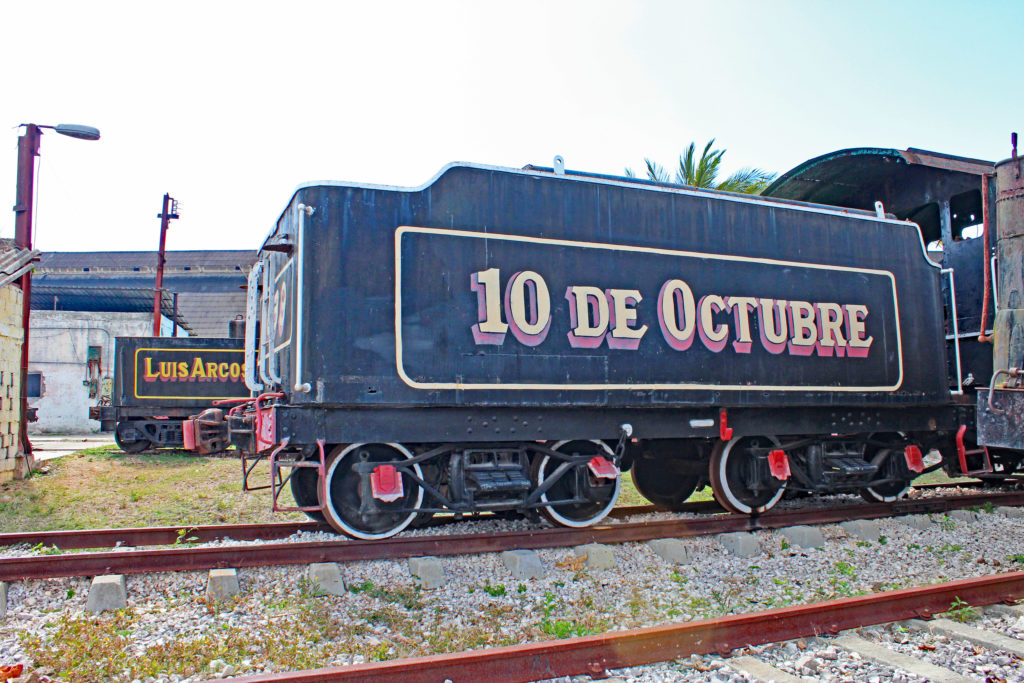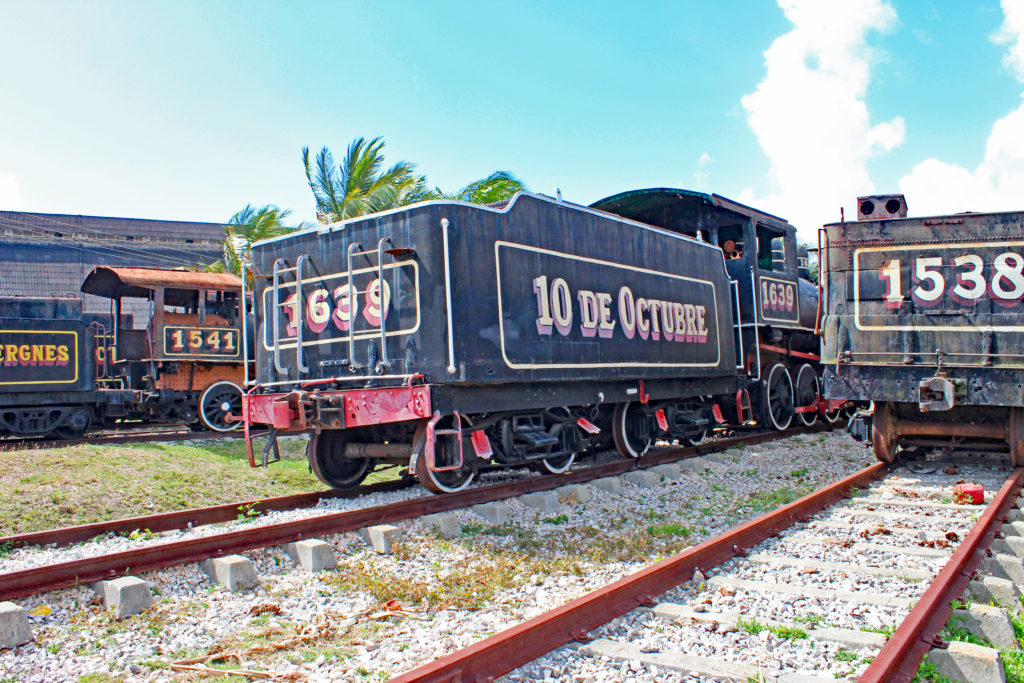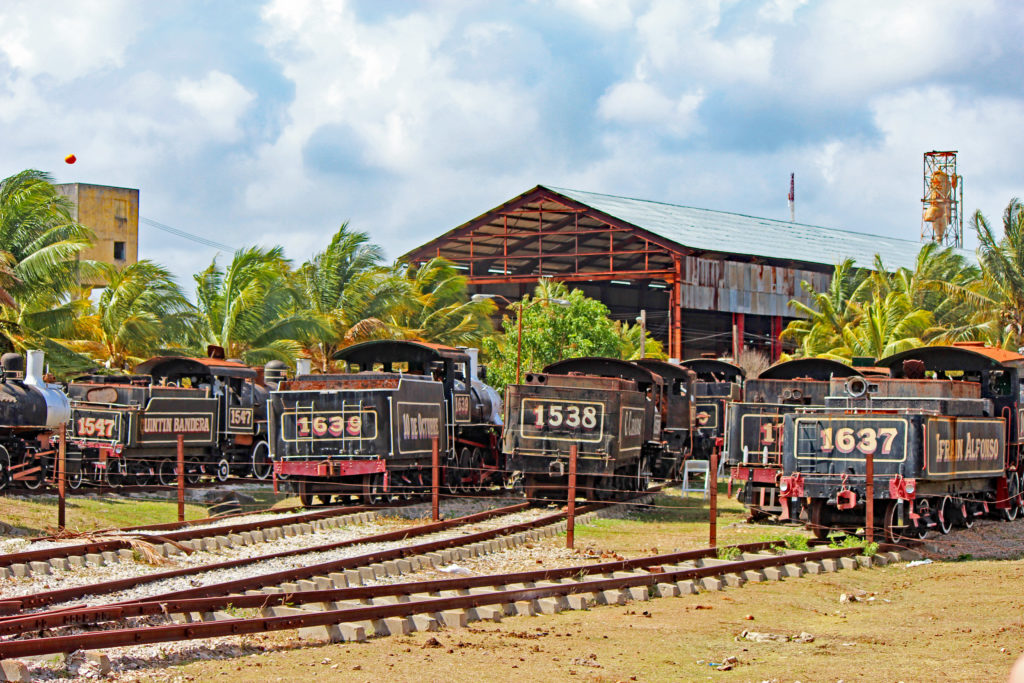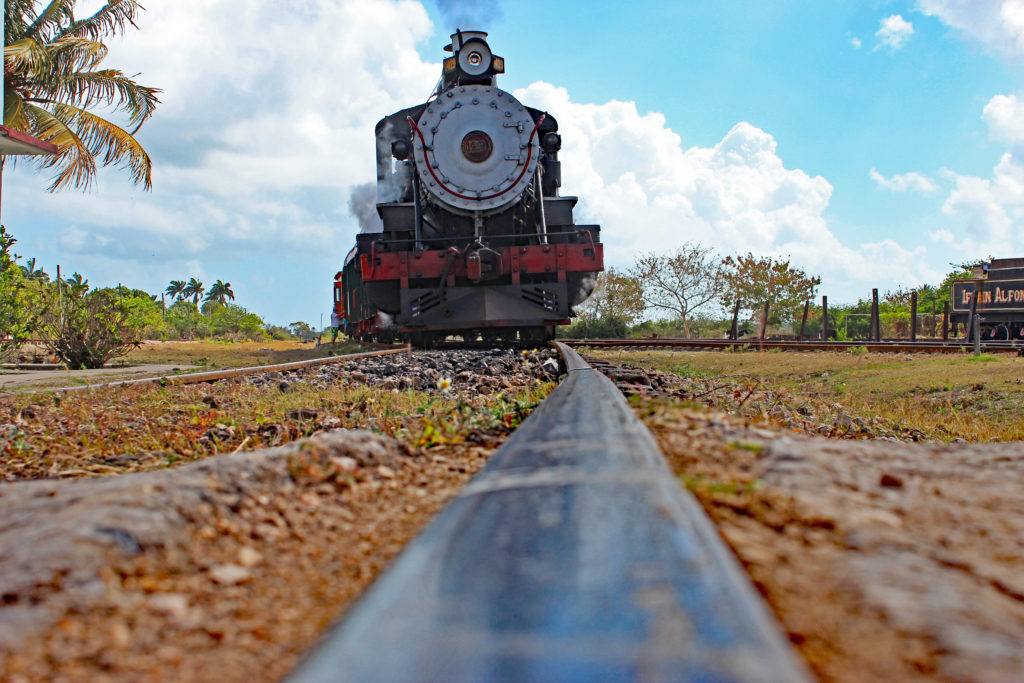At the Sugar Museum in Caibarien, Cuba, there is also a much more interesting (for some of us) steam engine museum. Some are painted up nicely and displayed up front with informative plaques. Others, like 10 de Octubre, are stuck in the back, rusting away on rusty tracks, hoping someday to be restored.
So, out of the many steam engines in what can be classified as a bone yard, why am I centered on this one? Well, October 10 just happens to be my birthday. What is the significance of October 10 that it gets a steam engine named after it? Well, it took a few days but I finally found out. Our tour guide that day, like most Cuban official tour guides, was busy with questions about how they are exceedingly poor (true but few will tell of the extensive black market that brings up their quality of life somewhat), how they get free education and health care, and, the Canadian favourite, how much does gasoline cost.
In the end, a young and energetic beach bartender explained to me that 10 de Octubre is the date that the first war for independence from Spain started in 1868. Even more significant for me because I was born on October 10, 1968, a century later. This was a ten year war that can’t really be counted as a victory as it didn’t bring independence and didn’t completely abolish slavery. However, it got the ball rolling and two wars later, Cuba did gain its independence from Spain (but became dependent on the United States.
Guerra de los Diez Anos
On October 10, 1868, estate and sugar mill owner Carlos Manuel de Cespedes had had enough and became the main protagonist in an uprising intended to bring independence to Cuba. Carlos actually planned to start on the 14th but Spain got word and they had to move fast.
From October 10, 1868 to 1878, the Cuban rebels fought versus the Kingdom of Spain. This was the first of three liberation wars against Spain. The war ended with the Pact of Zanjon. Slaves and Chinese that fought in the war gained their freedom but the war did not result in the freedom of all slaves, as intended. Plus, there was no independence from Spain, so it was a bit of a decade long failure.
On October 10, 1868, Cespedes issued the 10 de Octubre manifesto:
Our aim is to enjoy the benefits of freedom, for whose use, God created man. We sincerely profess a policy of brotherhood, tolerance, and justice, and to consider all men equal, and to not exclude anyone from these benefits, not even Spaniards, if they choose to remain and live peacefully among us.
Our aim is that the people participate in the creation of laws, and in the distribution and investment of the contributions.
Our aim is to abolish slavery and to compensate those deserving compensation. We seek freedom of assembly, freedom of the press and the freedom to bring back honest governance; and to honor and practice the inalienable rights of men, which is the foundations of the independence and the greatness of a people.
Our aim is to throw off the Spanish yoke, and to establish a free and independent nation….
When Cuba is free, it will have a constitutional government created in an enlightened manner.
Carlos Manuel de Cespedes
Carlos Manuel de Cespedes was an estate and sugar mill owner in Manzanillo, Cuba. He was born April 18, 1819 in Bayamo, Cuba. His death came during the 10 Years War when he was killed by Spanish troops in a mountain refuge on February 27, 1874.
Prior to the uprising, Carlos had a son Oscar who was imprisoned by the Spanish. Oscar would have been freed if Cespedes backed down from his uprising but when Carlos didn’t cave in to the Spanish, Oscar was executed.
Cespedes had another son, Carlos Manuel de Cespedes y Quesada. That son became president for a very short time in 1933.
Cuba Sugar Tour
The visit to see this historic rail engines is part of the Sugar Tour, available from the all-inclusive resorts in Cayo Santa Maria and Cayo Ensenachos. We did the tour in 2016 when staying at Memories Paraiso Azul Beach Resort and again in 2017 when staying at Iberostar Ensenachos on Cayo Ensenachos.
The tour is supposed to be a half day but it stretches to around 3 or 4 in the afternoon. There are certainly much better Cayo Santa Maria excursions but when you’re there with young kids, the steam train and shorter day are to your advantage.
After crossing the 48 kilometre causeway, the first stop is the Sugar Museum. The tour guide trucks you around the restored sugar mill before getting a glass of sugar cane juice and a complimentary bottle of rum.
You then have a very short time to explore the steam engine display before boarding the train to Remedios. At Remedios, you’re dropped in the main square where there’s the usual souvenir stalls with everyone selling the same stuff. There’s a couple of restaurants and churches to wander around.
At this point, you are not returned to your resort. You must instead go to La Estrella, the resort area ‘town’ that is full of even more souvenir vendors selling the same stuff. There is a meal in a restaurant that is far below what you’d get at your resort and is not authentic in any way. I wish, if you had to eat on the tour, it would be at a ‘real’ Cuban restaurant in Remedios or Caibarien. This is followed by a cigar and rum presentation, designed to free you of more money from your walet.
Yes, there’s a bit of cynicism in my writing, here. It’s my fault, really, for expecting interaction with a culture when staying at an all-inclusive resort. But, after several visits to Cuba, I realize that when Cubans see Canadians, all they see is a dollar sign flashing above our heads.
Remedios and Caibarien
The steam train (shown below) travels the seven kilometres between Caibarien and Remedios. Remedios, also known as San Juan de los Remedios, is a city of 50,000 in the province of Villa Clara. One of the oldest cities in Cuba, it was established in 1513, not long after Columbus came around.
Caibarien is a former important shipping port that has fallen into ruin. Also known as La Villa Blanca, Caibarien is much younger than Remedios, established in 1832. The population stands around 40,000 and much of that is workers from the nearby resorts.
